Excerpts from Jim Conrad's
Naturalist Newsletter
from the October 12, 2018 Newsletter with notes from a camping trip earlier this month into northern Guatemala's Petén region
COROZO/ COHUNE PALMS
This October 1 when I was in El Rosario National Park in northern Guatemala's Petén department, on the eastern side of Sayaxché, the Corozo or Cohune Palm, ATTALEA COHUNE, was the most frequently occurring, characteristic tree of the park's old-growth forest. The species occurs in rainforests and borderline rainforests from southern Mexico south throughout Central America into South America. It's too arid in the Yucatan for them, though.
El Rosario's forest grew tall and dense, so the excellent nature trail I hiked lay deep in shade. There, the main view I had of Corozos was of fronds of young ones not yet producing noticeable stems, as seen below:
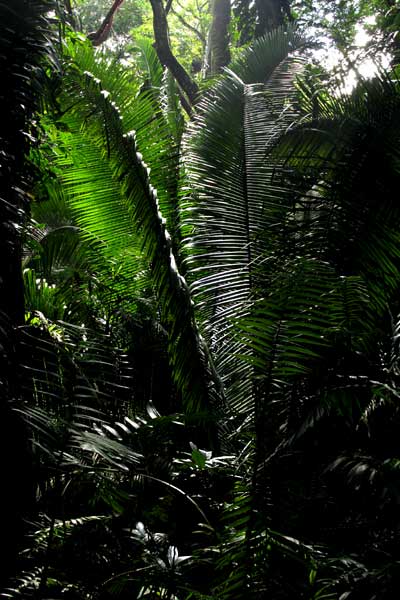
Sometimes older trees grew at a bend in the trail, enabling a view of the tree's attractive form, as shown below:

When an area is being deforested, often a few Corozos are left standing, presumably to provide shade for cattle, but also because the species is so handsome. What's especially appealing about them aesthetically is that the long fronds go limp toward their tips, nodding gracefully. In the forest, these features don't show up so well. Lone-standing mature trees look like giant feather-dusters with their handles stuck into the ground.
Corozos are big palms, eventually reaching over 20m (65ft) high. The fronds themselves can be enormous, attaining 10m or so, (33ft). A lower frond of one forest tree had broken near its base, providing an unusual view of a fully extended leaf, shown below:
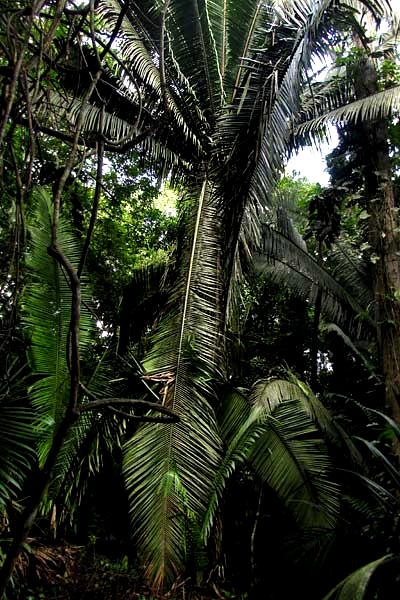
Corozos produce large clusters of hen-egg-sized "nuts" such as those shown below:
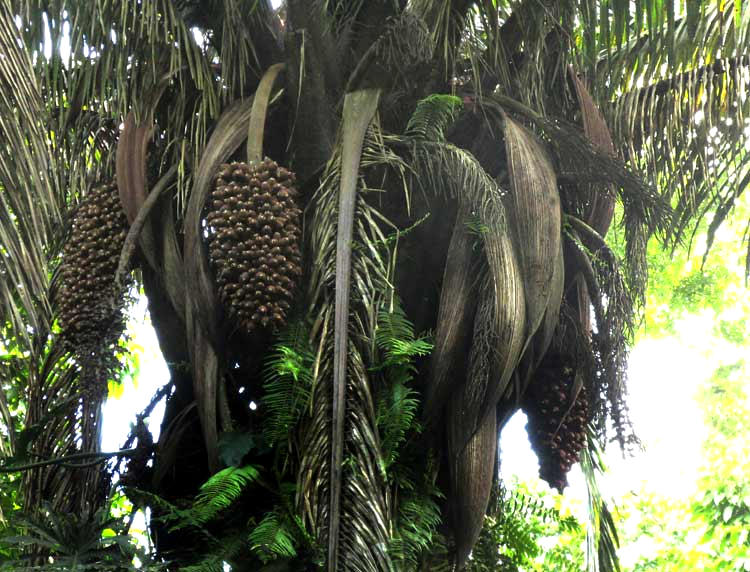
Often the ground below a mature Corozo is abundantly covered with nuts and if a little sunlight penetrates to that level a dense growth of seedlings results, as shown below:
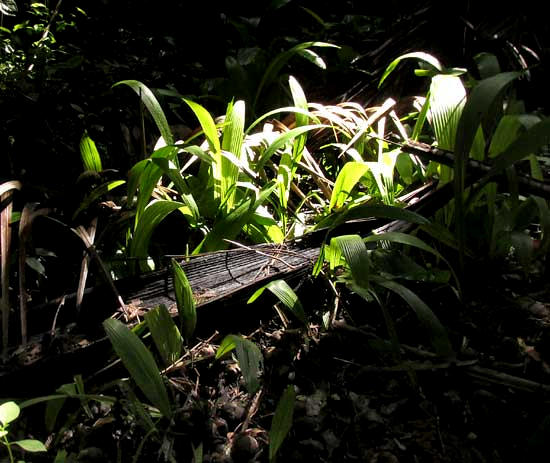
In the shadowy bottom of that image you can see many Corozo nuts that haven't germinated. And the nuts, though hard to crack, are tasty, both raw or cooked, tasting something like coconut. A non-drying cooking oil can be extracted from them. Also, the trees' very young shoots can be cooked as a vegetable, and the palms' hearts are considered delicious, and can be eaten raw, though of course taking the heart kills the tree.
The leaves are used for thatching. In fact, the roof of the shelter in which my tent was set up in the park's campground was thatched with Corozo frond, as shown below:
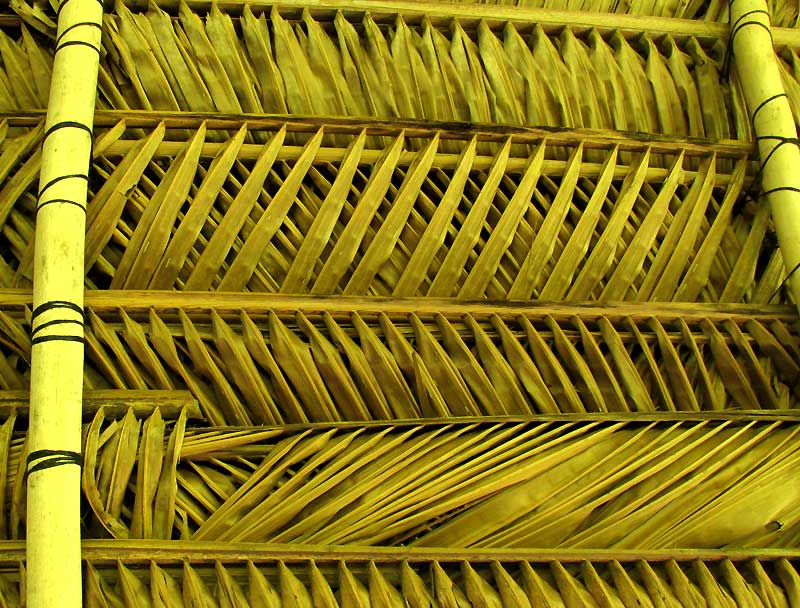
In some place people weave large mats, or hats, with the fronds. The tree's much-branched flowering structure, or inflorescence, is used as a broom, and the trunk's wood is durable and strong enough for construction purposes.